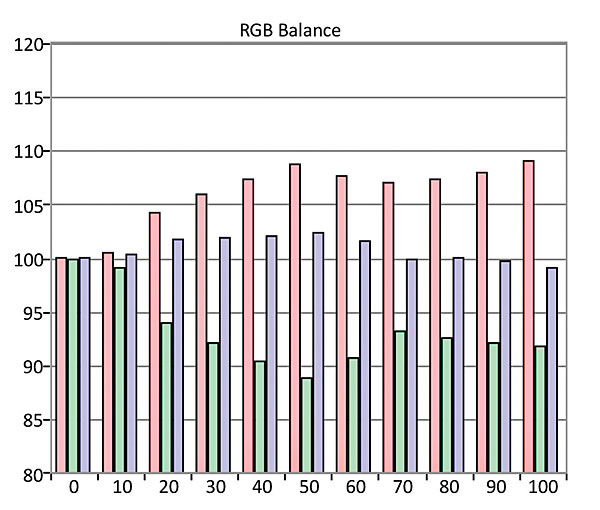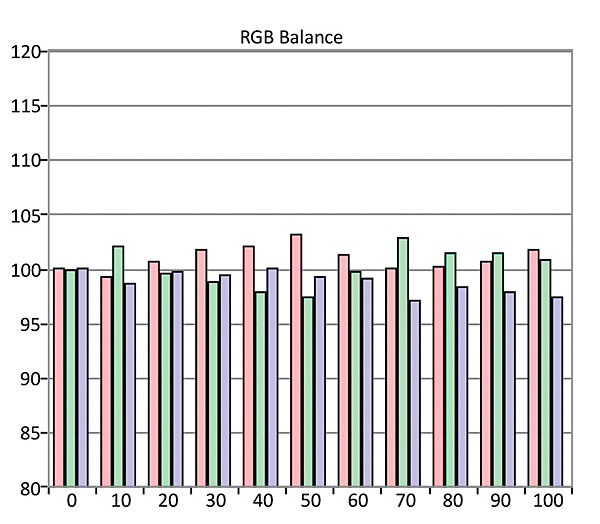Epson PowerLite Pro Cinema LS10000 3D LCD Projector Review Test Bench
Full-On/Full-Off Contrast Ratio: Infinite (approx. 80,000:1 to 120,000:1 real world)
The Epson PowerLite Pro Cinema LS10000 I reviewed had 480 hours on it. When I first turned it on, I restored all factory settings, to try to match the projector’s original out-of-the-box status.
All calibration readings were taken with a Colorimetry Research CR-100 tristimulus colorimeter profiled to a Jeti 1211 spectroradiometer in CalMAN 5. A DVDO 4K TPG pattern generator was used for calibration, and the Spears & Munsil HD Benchmark, 2nd Edition Blu-ray and Ted’s LightSpace CMS Calibration Disk were used for initial setup patterns and verification tools. All calibration was done off my reference 120-inch 1.78:1 Stewart Filmscreen StudioTek 100 screen, and contrast measurements were taken using a Minolta T-10 meter approximately 4 inches from the front of the lens.


All measurements were taken in the THX Color Mode preset with Power Consumption in Normal. The gamma preset selected was 1, which measured close to 2.4. All of the calibration was done with the lens iris at its 0 setting and the dynamic contrast function disabled. Contrast ratio measurements were done in a variety of different modes for the lens iris, as noted. The laser had 500 hours on it during the calibration.

The highest native contrast ratio (Dynamic Contrast disabled) was obtained with the projector in High lamp mode and the lens iris fully closed. The highest contrast ratio achieved was 24,000:1. Using the Dynamic Contrast setting in either auto mode resulted in a true absolute black as the laser shut off, effectively making the contrast ratio infinite. As mentioned in the review, though, the more realistic usable contrast ratio for most material was closer to 100,000:1, with a scene-to-scene contrast closer to the native measured contrast of 24,000:1 (given the slower response of the dynamic system). I also did a rough ANSI contrast measurement using only the four internal squares of the pattern for reference and got an approximate value of around 210:1, which is a bit low compared with that of other projectors I’ve measured using this method. RGB and grayscale tracking out of the box were OK but not quite as spot-on as the results from other projectors I’ve measured in the past year. As noted in the review, I had a hard time getting the grayscale midpoints to balance properly. The projector would have benefitted from a multi-point grayscale calibration system like those seen in many flat panels today. The color gamut in the THX Color Mode preset was exceptional. I could fine-tune the color to nearly perfect levels but at the sacrifice of making saturation points below 100 less accurate, so I’d recommend not touching the color gamut. Luminance and saturation tracking were generally excellent as long as I left the CMS (color management system) alone.—KRD
- Log in or register to post comments























































